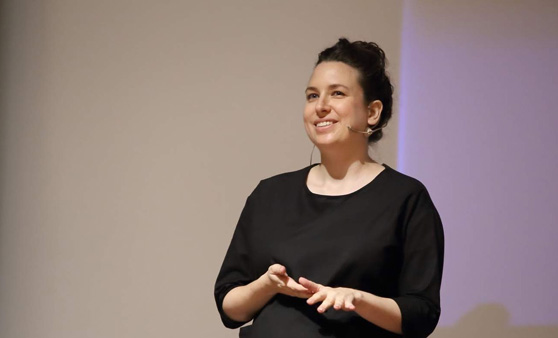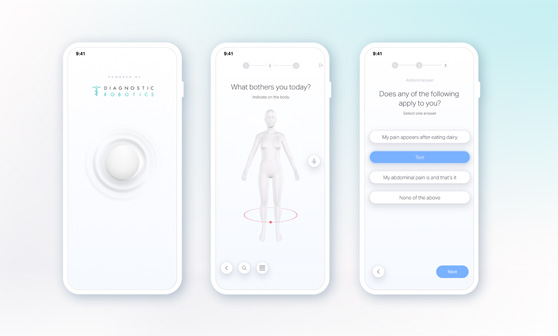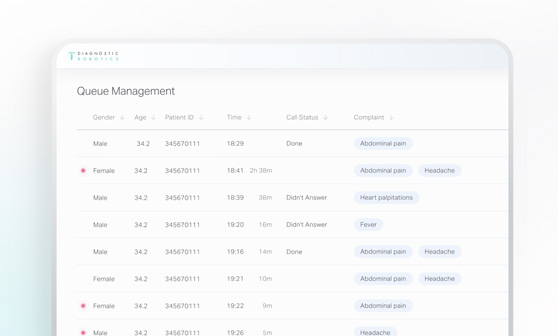More:
News & Stories
Digital Medical Technologies via Visual communications
"Beyond a top-down look when it comes to design and caring for designers, it's mainly about seeing how a language and culture of design is introduced into a company that is essentially technological." Shani Brusilovsky, Design Director at Diagnostics Robotics, graduated from the Department of Visual Communication at HIT in 2013.

Shani Brusilovsky, Design Director at Diagnostics Robotics, Graduate of the Department of
Visual Communication, 2013
The Visual Communication Department at HIT was for Shani Brusilovsky a huge springboard for her current occupation, the Design Director at Diagnostics Robotics. Brusilovsky graduated in 2013.
Already during her studies, she worked for Calcalist in the infographic department. Later, parallel with her work as a designer, she was involved in social projects, such as Remembrance in the Living Room (Zikaron b’Salon), or the Pairs Challenge program, which aimed to bring innovation to developing countries. "I was the only UX / UI designer to apply," she recalls. "We learned about the medical world in India, where I was really excited to learn about the world of healthcare."
Shani cites the student exchange experience she made during her studies at the Institute of Technology, in Barcelona, as one that allowed her to broaden her horizons, get to know people from other cultures and improve her design and thinking abilities.
For the past two years she has been working for Diagnostics Robotics. Prior to that, she worked for MobileODT which manufactures a device for diagnosing cervical cancer based on a cell phone, and earlier in various design studios.
On her role as Director of Design and the use of her academic background, she says: "Beyond an overview when it comes to design and caring for designers, it is mainly about introducing a language and culture of design into a company, which is essentially technological. If an infographic of a complex algorithm is being made, I make sure we understand it, and identify the place where design adds value and be there."

Diagnostics Robotics - The Vision
“The subject of design and medicine has interested me greatly in recent years and I wanted to delve deeper into it. I introduced methodologies of research, of design, and towards the end of my time there we went more into data science: not just turning a device that costs a lot of money accessible, but thinking about how we could help diagnose with the amount of information we had. As we progressed, I became more and more interested in it. It is clear to me that the next step will be how to design employees with data scientists."
Diagnostics Robotics was founded three years ago by three Israeli entrepreneurs and its vision is to use advanced technologies and artificial intelligence to make medicine accessible and better, more efficient and cheaper, both for the medical staff and for patients.
Immediately after the first wave of the Covid-19 pandemic, Diagnostic Robotics converted its system into a questionnaire with which the company could help the Israeli Ministry of Health (and later the United States and India), compile an epidemiological map to predict and detect symptoms for the virus.
"Our product replaces the doctors' questioner, and based on the answers we could show a connection between the virus and symptoms they did not think about. One Friday we sent all the questionnaires to millions of people at once and stood here to make sure the spacecraft did not fall apart. We saw everything work, it was very exciting."

Diagnostic Robotics - the patient interface
"Nowadays, all the documentation and admission processes in emergency rooms are slow and cumbersome," explains Shani. Based on their answers, we prepare the summary for the doctor and find out what tests the patient needs to do, what they might have, and optimize this whole part.”
The company's second product deals with preventive medicine and is found on the medical staff's computers. Shani explains: "In the worlds of preventive medicine we want to keep people healthy. Based on a patient's medical information we can predict his chances of getting to the emergency room in the coming months and help the medical system offer him a checkup or treatment; not wait for him to feel unwell."

Diagnostic Robotics - the physician interface
Shani notes that what has led and is leading her along the way is design thinking along with the desire to work on something that brings value. During her studies, she also volunteered and did social work.
"In the medical world today there is a great thirst to move from the traditional structure to the digital world and at the same time it is clear that there is no intention to replace doctors. There are many things we can do in the digital field to streamline and make the field smarter. Understand how he feels at each stage and try to help in this way."
Posted: 11/03/2021
- News & Events
New Collaboration with Sheba Medical Center will qualify nurses to work in a digital environment.
Collaboration between HIT Holon Institute of Technology, the teaching authority of the Sheba Medical Center, and the Sheba-BEYOND virtual hospital will allow training nurses in Israel and around the world to work in a digital...



 Additional programs
Additional programs
